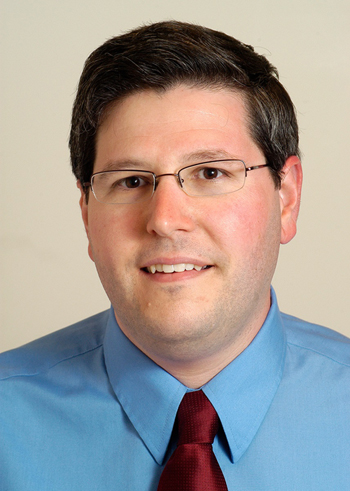Preparing for the Channel Repack: An Interview with GatesAir's Rich Redmond
SPRINGFIELD, Va. ― For decades, Harris Broadcast was a popular manufacturer of broadcast transmitters, before it split its operations earlier this year and the transmission side was re-named GatesAir. So many broadcasters around the world (and certainly in the U.S.) have Harris/GatesAir transmission products, that Broadcast Engineering Extra thought it was a good idea to get the company's insight on the topic of preparing for the impending realignment of the television broadcast spectrum.

Rich Redmond, chief product officer, GatesAir Rich Redmond serves as chief product officer for GatesAir, responsible for product engineering, product line management and R&D, among other tasks. Redmond spent many years in leadership roles at Harris Broadcast and Harris Corporation's Broadcast Communications Division, responsible for new products, strategy and marketing efforts across radio and television transmission businesses. Prior to joining Harris, he held national sales management responsibilities for Northeast Broadcast Labs, and spent time on the broadcast operations side as a general manager, chief engineer and consultant.
BEE: The timing and details of television spectrum realignment and repacking are known only to the FCC at this point. What is GatesAir doing to prepare for whatever may come from the FCC in this regard? Is there anything that can be done in preparation without knowing the specifics?
GatesAir Maxiva M2X exciter Redmond: GatesAir has been designing transmitters that offer higher efficiency and low total cost of ownership, driven by advancements in broadband RF amplification and software-defined exciter technology. These platforms are ideal for broadcasters looking to take advantage of lowering their operating costs today, and ensuring their investment is flexible for the transition in the future.

BEE: Virtually all stations are operating with recent ATSC exciters. Is it reasonable to assume that these can be switched to different channels easily and inexpensively?
Redmond: Our most recent exciters are frequency agile, and can simply be switched from one channel to another across UHF and VHF channels. Depending on the vintage of a station's transmission equipment, amplifiers, channel filters, transmission line and antennas have different levels of complexity in order to change channels, and may need additional investment.
BEE: What about products like mask filters? Can these be conveniently re-tuned or is this a case of "throw out the old and pay for new” filters?
The professional video industry's #1 source for news, trends and product and tech information. Sign up below.
Redmond: Some channel filters can be re-tuned, and others may require replacement. The flexibility of channel changes varies from model to model, and varies based on power level.
BEE: What happens in regard to upcoming versions of the ATSC standard (both ATSC 2.0 and ATSC 3.0)? What does that mean to stations that are facing the FCC's rules on realignment?
Redmond: The transition of modulation from the current ATSC version to ATSC 3.0 is an ongoing process with various proponents offering differing solutions. The common theme is that the new system must support a mobile consumer, and as such favors a multicarrier OFDM-based modulation. All GatesAir transmitters offered today support single and multicarrier modulations, and feature broadband high-efficiency capabilities so today's investment in transmitter technology is future-compatible. Depending on the final view of the standard, an upgrade to the exciter with either hardware or software will enable the next generation ATSC 3.0 standard. We are currently working with many broadcasters to help them evaluate their facilities, and map out an evolutionary approach to the transition.
BEE: Is there any single thing broadcasters can do now to make their lives easier when the re-packing order arrives?
Redmond: Looking today at the main components and systems in your broadcast chain and working with suppliers to understand the flexibility of what is in place today, and the impacts there may be on those systems should a frequency or standard change happen. This includes tower space, weight and window load capacity and compliance to current standards, which may have changed from the last time an antenna was installed. The earlier a survey of what is in place is done and what may need to change is outlined, the better position one is in to map out a clear transition plan when the final information is available.
BEE: Any other things broadcasters should know about this?
Redmond: In many cases technology has advanced significantly since many broadcasters installed their systems for ATSC broadcasting. Advancements in encoding, transmission technology, cooling and energy consumption allow broadcasters to significantly lower their daily operating costs, and improve reliability and quality of their signal today, laying the groundwork for a smooth transition to what tomorrow brings.
Bob Kovacs is the former Technology Editor for TV Tech and editor of Government Video. He is a long-time video engineer and writer, who now works as a video producer for a government agency. In 2020, Kovacs won several awards as the editor and co-producer of the short film "Rendezvous."

